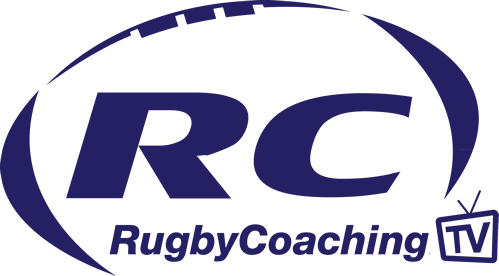Coaches - Rugby Drills Coaching Library
Warming Up
Video Subtitles
You can coach them in individual bits and parts. They work for their a games. You can do that cover off the whole spectrum and you won't necessarily have to tell the younger players what they're doing. It's just habits and skills you'll begin to develop. So we find a massively useful tools to use in particularly at these age groups. They're pretty fun quite engaging Quick changes from single directions most Direction the difference now in terms of their spacing across the field from the beginning. It's like we look to highlight to them in terms of how well developing start off with we're going to warm up in a game plenty of catch pass. We're gonna try and go from a single multi-directional to single directional game. So we're not always doing the same thing. Well, let him go free to begin with so we let him pass one of the they want when they go to single directional up. She becomes a rugby game. So they'll have to change their how they're passing how they're catching into normal rugby stuff. So this means we're not hammering one school that we never really am doing a game. They're seeing space without us telling them the ideas of what we're doing today is trying to get to see space find a past that was something finish her off. So it's a way of us getting all out without and giving too much detail. So the game we're about to go into is a warm-up game that we use to make sure. I got plenty of touches on the ball the problem with sort of classic 10 pass multi-directional touches. It means that you're not necessarily getting across standard rugby passes all the time. You're going overhead and I think which is great for hand-eye coordination of the warm-up game, but done too much. They're not necessarily practicing skills are going to be doing in the game. So this will go for a multi-directional to a single directional touch game whether be playing 10 pass, but every time our the Ian calls change or the players reach 10 passes, they'll go into a single directional normal game of touch rugby. So just means having to change their focus will put their skills back into a classical rugby skill set and also keeps them fairly interesting excited for warmup. So we find it's a pretty effective way of woman all the boys up. So work the space. And so the moment you can see the boys are changed from multi-directional single Direction. They're going traditional touch the coaching points that will look to get hopefully you're looking at as you zoom out is when they change from old direction to single Direction, you only find players been punched around the ball. So we're going to try and gain them a realization of space. Once they go to single direction that they're normally be space for Wing so you can see out on the left hand side attacking team here. There was a lot of space so their life they found it, which is great. They met at the moment not realize that they're finding or they may not realize whether space would be but hopefully as we draw more information out of them and they're being to work out where the space is very impressive. Is awesome one thing what do you think when I go to One Direction? What can we do quicker realign? Perfect. Okay. Does anyone know don't answer it where the spaces when we go to single directional Touch where the space tends to be we go to single directional we can play ten touch all ten passes brilliant for catch part and I it's good to get kids straight into games warm-ups. There's this pretty pointless this age in terms of running up and down the field jogging stretch stretch stretch. Okay, they'll get just as much being kept in a small area. No one is doing any massive accelerations in this no one is doing anything particularly hard. It means their skin starts to race heart rates same time. They get in hand. I know the reason we're going from ten past many directions because that'll improve their skill to be able to scan and see space when we go to single direction. We can start to highlight bits. We think are important terms of working behind the ball carrier. It's going to force everyone back into our substations. It means that they're going to start getting awareness of space slightly say there tend to bunch. On the ball, we're going to single Direction the space will be away from the wall. Probably similar to us getting a penalty free kick in a game or it's just means we start to realize it we can start questioning then on their scanning then what they're seeing where the space will be so we can pull loads out of it from a pretty easy warm-up game. So it's quite a nice tool for us to use Okay, space fast Look Away use me use me. How big is use me? And I've done says he's standing 25 meters of space now. I don't expect to be able to fight its past past 25 meters but in 1/2 quick passes with there's possibly to be get to that space. Quick changes from single directions most Direction the difference now in terms of their spacing across the field from the beginning. It's like we look to highlight to them in terms of how well developing you can see that it actually keeping width and it's given the massive options in terms of keeping out of play by side with sort of six minutes into warm up drill there ought to begin to understand about keeping with keeping space keeping debt behind the ball carrier and if we look at the kind of head scanning and hopefully the space they're starting to fill up in the grid now Ian's question them and they've given the answers of how big it is. Those things will massively improve it. Everything we do we want we want them to be in a game situation. So learning through game sent. So the the passing skills that they're doing it with with Defenders around them with communication with with Defenders to be receiving passes from different heights exception.

